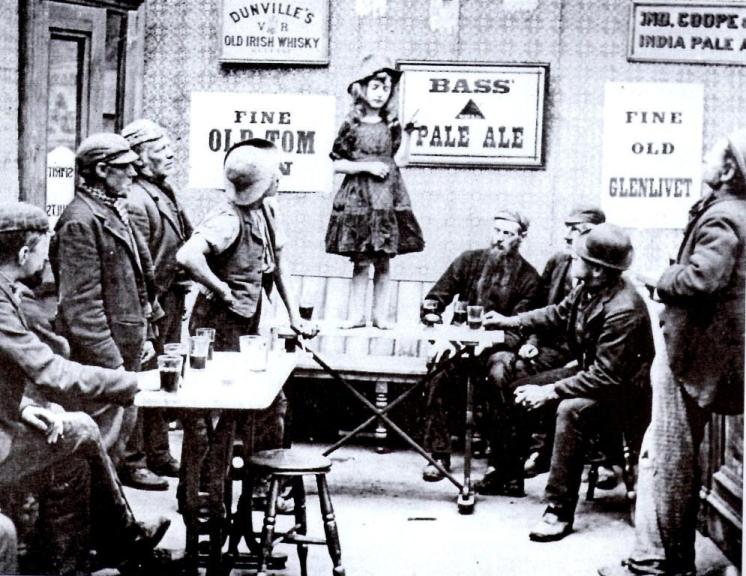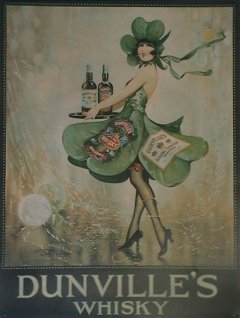A CASE OF SINGING FOR YOUR SUPPER ?
A look back into the past, but is all what it seems ?
We live in a world where media manipulation is part and parcel of everyday life, be it written, verbal or visual.
More so perhaps today than at any point in history, as the Internet has a growing influence over our every day lives in what we read and see, and perceive to be factual and genuine.
As with all things originally designed for the good the Internet has its nemesis, and is the playground of misinformation and the blurring of the visual truth.
Seeing through these charades as the technology continues to evolve at such a staggering pace also makes the search for the 'what is real' even more difficult.
But how new a phenomenon is this ? In reality not that new at all.
I was bearing these thoughts in mind when I came across a photograph recently that transfixed and intrigued me. Was the image what it seemed or was it the 'product' of a different age of deception ?
The manipulation in this case would not be the physical tampering of the photograph, but whether it was a 'staged' or 'natural' setting.
Victorian sentimentality was often the preserve of the middle classes, and photography proved itself the ideal vehicle.
Often it would depict 'staged' themes of morality or fantasy which were often wistful extensions of their own moral code of correctness, or spiritual longings.
These images were far less removed from their own middle class realities in terms of everyday comforts, but a million miles apart from the poorer classes.
Was this picture also a manufactured attempt to portray the working classes in their own 'contented' sentimentality or did it depict a true way of life, and was it real ?
What struck me at first was how unusual it was to find a picture portraying life 'within the pub' from this period. Often such scenes, both before and after this time would exist in exaggerated character drawings or paintings, but not in photograph. Plenty of external images of pubs exist, but few internal.
Secondly was the atmosphere of intensity the picture generated, as the customers listen intently to the rendition (or recital) the young girl is giving, as if hanging onto every word...
However, in contrast to this there is a relaxed air about the composition in the way the customers are sitting and resting, which adds to its credability.



What we do know is that poorer children were often coerced by their parents into entertaining the locals for a few pence to supplement the family income, and that one of the most ultimately famous of these children was Charles Dickens.
With his family in a constant flux of minimal credit and serious debt, it is said that Dickens mother would force him to sing for a few pence in the same manner. His father too played his part, with one of his favourite songs which he would ask his son to perform being ' The Cat's Meat Man'.
In fact one pub in London still exists where the young Dickens was foist onto the bar to give his renditions to the locals, The Grapes at Lime house in the East End, overlooking the Thames.
But the photograph also gives us some interesting details about the pub itself and what is being consumed. Clearly set in the Public Bar some of the advertising also helps to narrow down the time line.
Dunville's Old Irish whisky, advertised in the top left of the picture, was founded in 1808 and has long since disappeared from the optics shelf. The interesting feature within the advert is the ' VR ' either side of the crown which referred to ' Victoria Regina ' and was a typical sales tool used by many manufacturers of the period. In this case it could also be a statement of allegiance from a producer North of the border to the Crown itself.
As Victoria's reign begun in 1837, and she died just after the turn of the19th Century, we can place the photograph prior to 1901, with Dunville's themselves finally closing for business in 1936.
The poster below for ' Fine Old Tom ' refers to a generic type of Gin that again means little to the consumers of today, but would be well understood by our Victorian forebears. Described enigmatically as the ' Missing Link ' in a recent revival of the style it referred to a type of gin that sat between both London (dry) and Geneva (floral) in flavour and was said to be' sweeter ' in style than both. Initially, in the 1700s, this 'sweetness' was to disguise the many impurities in the gin.
As for what is being consumed Mild would seem to be the dominant style on the tables, although lighter brown ale is also present, with stout at the rear of the picture.
The Public Bar was also known as the ' Four Ale ' bar and so called after its mild, which was priced at four pence a quart.
Noticeably, the one type of beer not present on the tables but advertised overhead is pale ale, firstly in the form of Bass, and more intriguingly with Ind Coope.
The Ind Coope brewery itself was founded in Romford, Essex in 1708 with Edward Ind taking over the Star Brewery in 1799. The rise of Burton brewed India Pale Ale had begun in with Samuel Allsop's in 1822, and a number of other brewers in Burton were naturally keen to have a slice of this emerging market and started to produce the style. For the London brewers this proved to be a problem as the waters of Burton, rich in Calcium Sulphate, were ideally suited to producing the clarity required of this new breed of IPA . The London waters, being higher in Calcium Carbonate, favoured the darker milds, porters and stouts.
The only option available in those days to take advantage of this rise in popularity was to build your own brewery, which is what Ind Coope did in Burton in 1856. Ironically, both Ind Coope and Allsop's were later to merge together in 1934.
Pale Ales or IPA's were some of the more expensive beers on a publicans price list, and therefore out of the reach of many customers who frequented the public bar. This, allied to the spurious belief that darker beers, by their very nature, were more nutritious than paler beers still exists in many quarters to this day.
The Ind Coope advert on the wall therefore sets the photograph as being after 1856, which helps to narrow it down as being in the late Victorian era and prior to 1901.
Glenlivet featured on the middle right still lives on to this day of course.
As with anything of this nature, whilst we cannot conclusively prove its authenticity, the balance would seem to swing in favour of a real event, rather the the product of the darker art of deception. The truth however lies at that point in time, and a place we cannot revisit.
But, you cannot help but wonder what did become of the young lady....who appears to captivate her audience so fully ?
--------------------------------------------------------------------------------------
With many thanks to TG.
TO RETURN TO ARCHIVE CLICK ON ARROW TOP OF PAGE